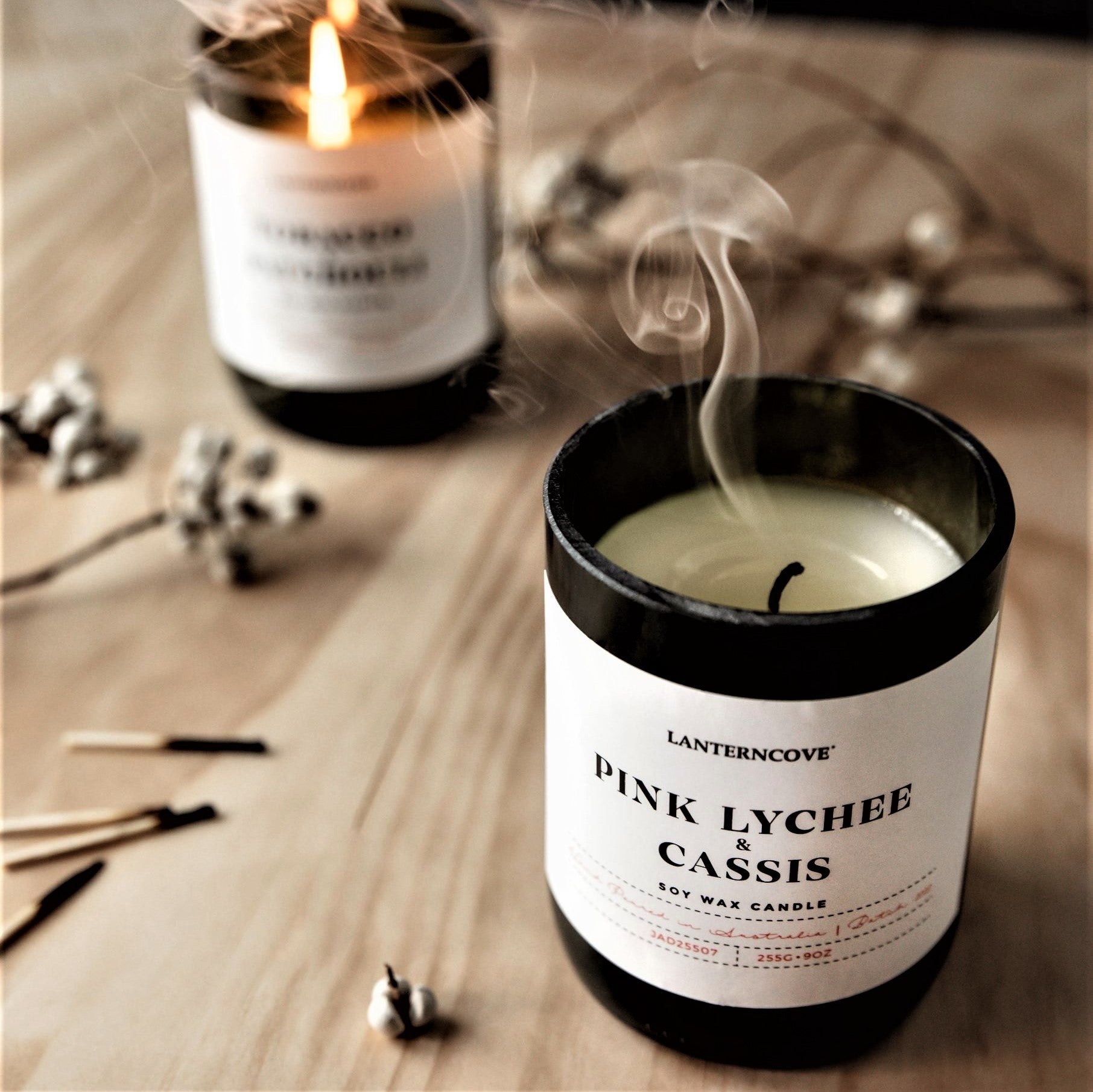Instill Your Home with the Fragrance of Crystal Soy Candles and Home Fragrance
Wiki Article
From Wick to Wax: Recognizing the Chemistry Behind Soy Wax Candles and Their Environmental Influence
As we illuminate our areas with the cozy glow of candles, there exists a realm of detailed chemistry behind the apparently simple act of lighting a soy wax candle light. Join us as we unravel the scientific details behind soy wax candle lights and explore their ramifications on our atmosphere.Soy Wax Vs. Paraffin Wax
When contrasting soy wax and paraffin wax for candle light production, it is vital to recognize the unique features and benefits of each material. Soy wax is a natural, renewable energy acquired from soybean oil, making it naturally degradable and environmentally friendly - crystal soy candles. On the other hand, paraffin wax is a byproduct of oil refining, which raises issues regarding its environmental influence and sustainabilitySoy wax candle lights melt cleaner and produce much less residue compared to paraffin wax candles, making them a healthier option for interior air quality. Furthermore, soy wax has a reduced melting point, enabling a longer-lasting candle light that disperses scent better. Paraffin wax, on the various other hand, tends to melt faster and much less cleanly, possibly launching unsafe chemicals into the air.
From a sustainability perspective, soy wax is preferred for its biodegradability and eco-friendly sourcing, straightening with the expanding consumer preference for environmentally conscious products. While paraffin wax has actually been a typical selection in candle light making as a result of its price and simplicity of usage, the change towards eco-friendly options like soy wax is obtaining energy in the market.
Chemical Composition of Soy Wax

Combustion Refine in Soy Candles
The chemical composition of soy wax straight influences the combustion procedure in soy candle lights, impacting elements such as melt time, scent launch, and environmental effect. When a soy candle is lit, the heat from the fire melts the wax near the wick.
The combustion efficiency of soy candles is affected by the pureness of the soy wax and the top quality of the wick. In addition, soy wax candles have a reduced environmental effect contrasted to paraffin candles due to their eco-friendly and eco-friendly nature.

Ecological Benefits of Soy Wax

Considered a lasting choice to traditional paraffin wax, soy wax supplies remarkable environmental benefits that make it a preferred option among eco-conscious consumers. One considerable benefit of soy wax is its eco-friendly sourcing. Soy wax is stemmed from soybean oil, which is primarily cultivated in the United States. The growing of soybeans assists support regional farmers and reduces the dependency on non-renewable fossil fuels made use of in paraffin wax production. Furthermore, soy wax is eco-friendly, indicating it damages down normally without releasing hazardous contaminants into the environment. This characteristic makes soy wax candle lights a much more eco friendly option compared to paraffin wax candle lights, which are made from oil, a non-renewable resource. In addition, soy wax burns cleaner and produces much less soot than paraffin wax, contributing to much better interior air top quality and decreasing the requirement for cleaning and upkeep. Generally, the ecological advantages of soy wax straighten with the expanding demand for lasting and environmentally friendly items out there.
Recycling and Disposal Factors To Consider
Recycling and correct disposal of soy wax candle lights play a critical function in preserving ecological click for info sustainability and decreasing waste in households and areas. When it pertains to reusing soy wax candle lights, the initial step is to make certain that the candle light has actually shed totally. This can be achieved by allowing the candle light to burn till the wick is no much longer useful, and after that allowing the staying wax cool and solidify. As soon as the wax has strengthened, it can be carefully removed from the container.
In terms of disposal, if recycling is not an option, soy wax candles are naturally degradable and can be safely dealt with in most family waste systems. Nevertheless, it is always advised learn the facts here now to get in touch with local reusing facilities or waste administration services for particular guidelines on candle disposal to guarantee appropriate handling and environmental management.
Final Thought
In final thought, the chemistry behind soy wax candles reveals their environmental advantages over paraffin wax candles. Soy wax, derived from soybean oil, burns cleaner and creates much less residue when compared to paraffin wax.When contrasting soy wax and paraffin wax for candle production, it is important to understand the distinctive qualities and advantages of each material (soy candles).Soy wax candles shed cleaner and from this source release less soot compared to paraffin wax candles, making them a healthier option for indoor air high quality.Taken into consideration a lasting option to conventional paraffin wax, soy wax provides remarkable ecological benefits that make it a preferred option amongst eco-conscious consumers. Soy wax burns cleaner and creates much less residue than paraffin wax, adding to much better indoor air high quality and lowering the need for cleansing and maintenance.In final thought, the chemistry behind soy wax candles discloses their ecological advantages over paraffin wax candles
Report this wiki page